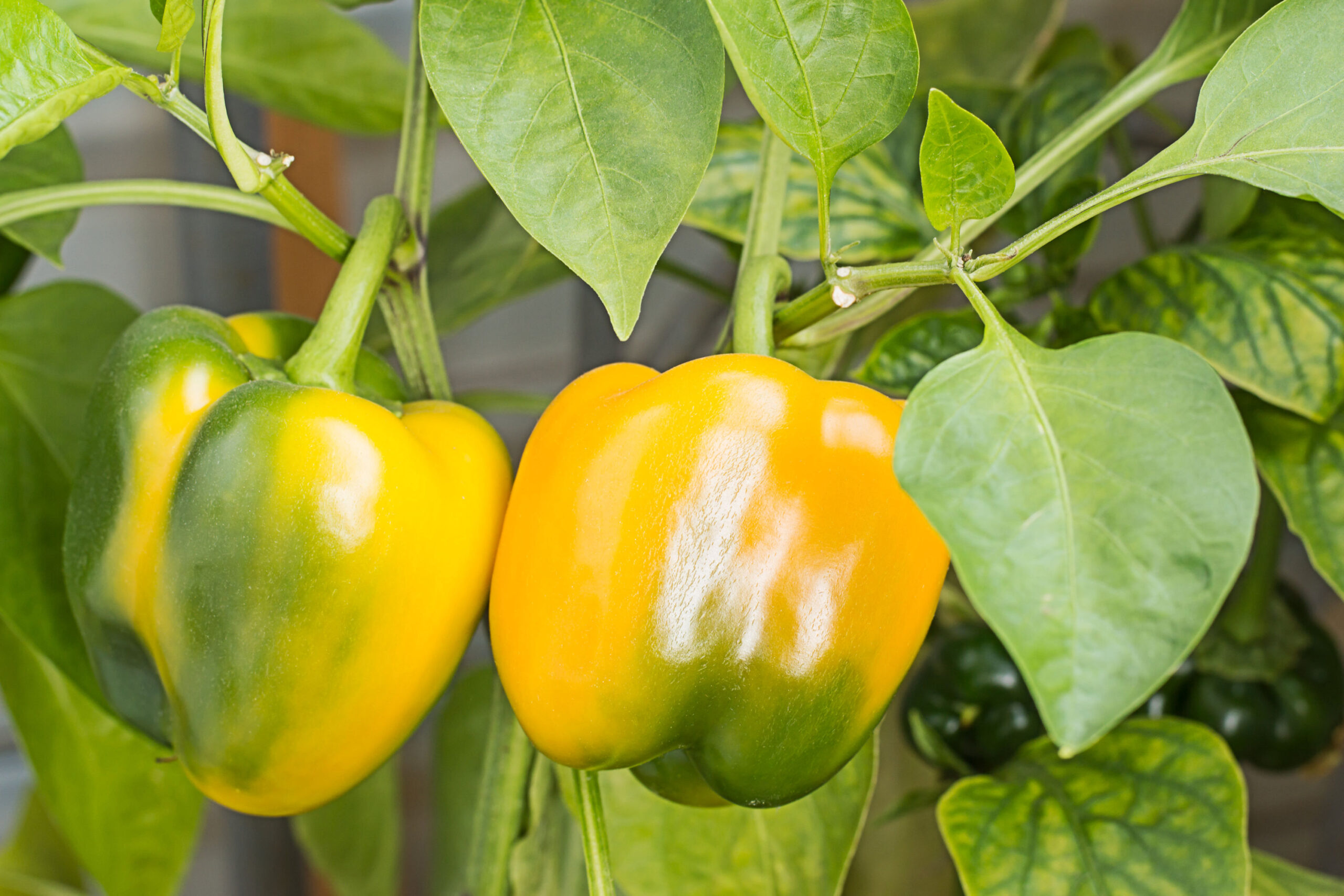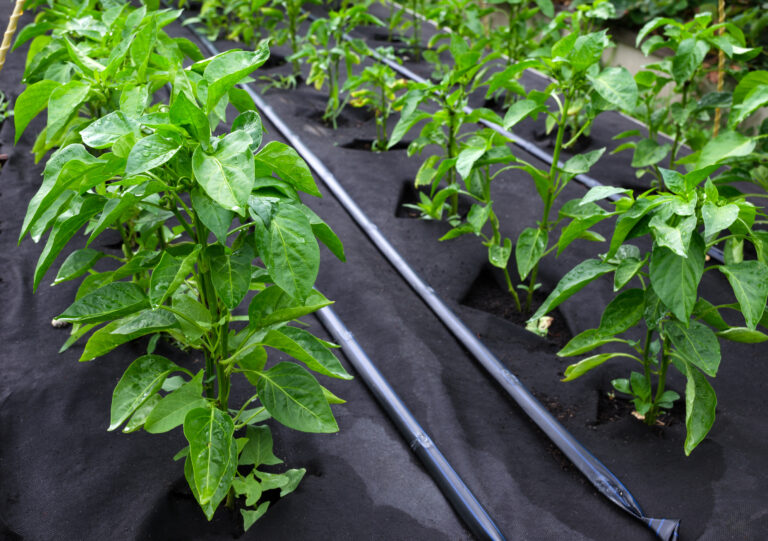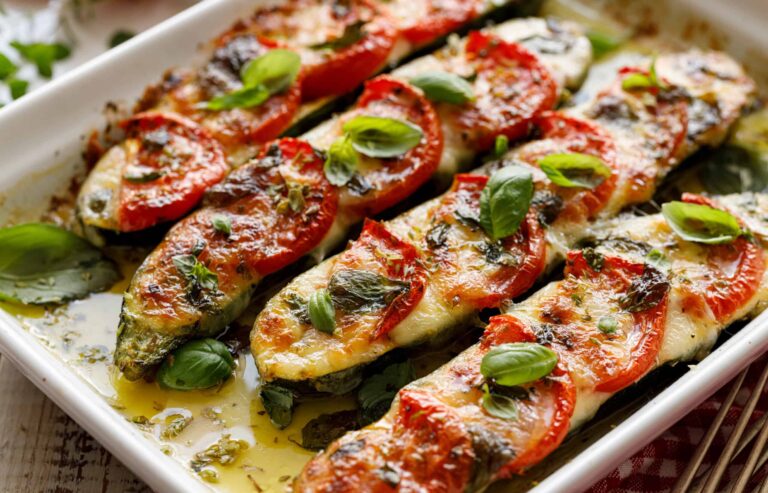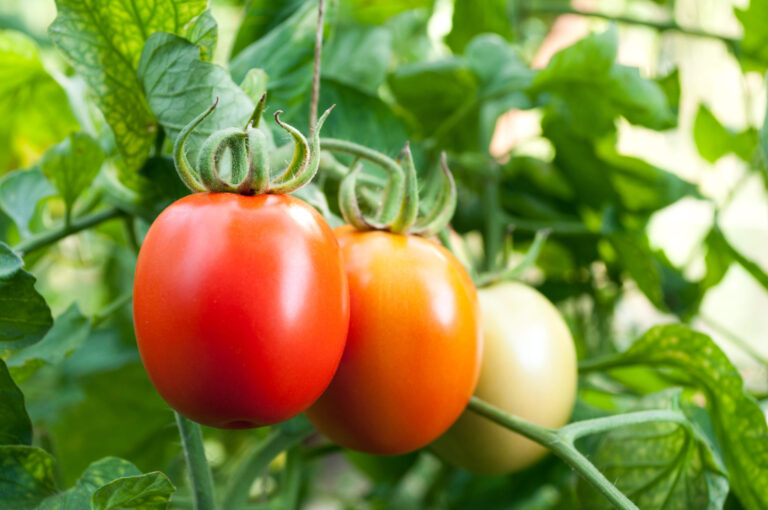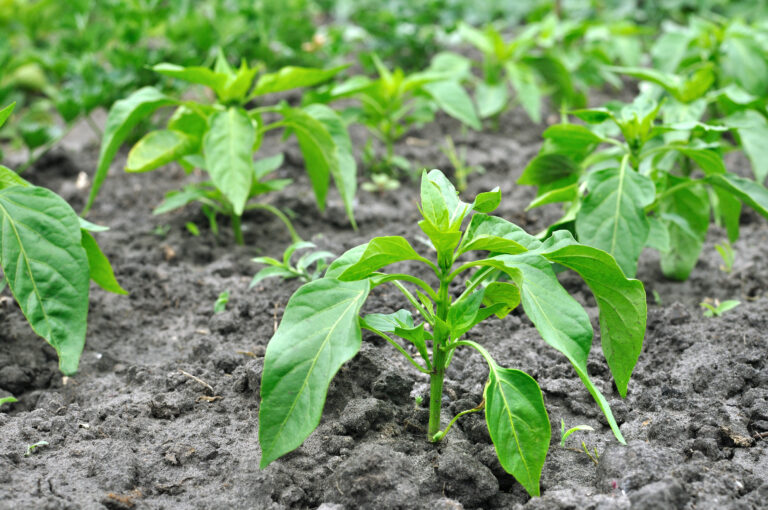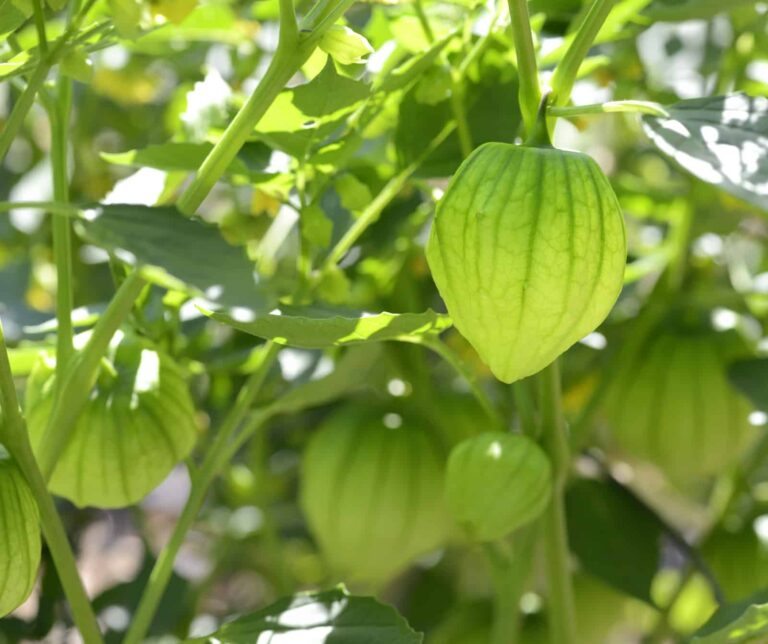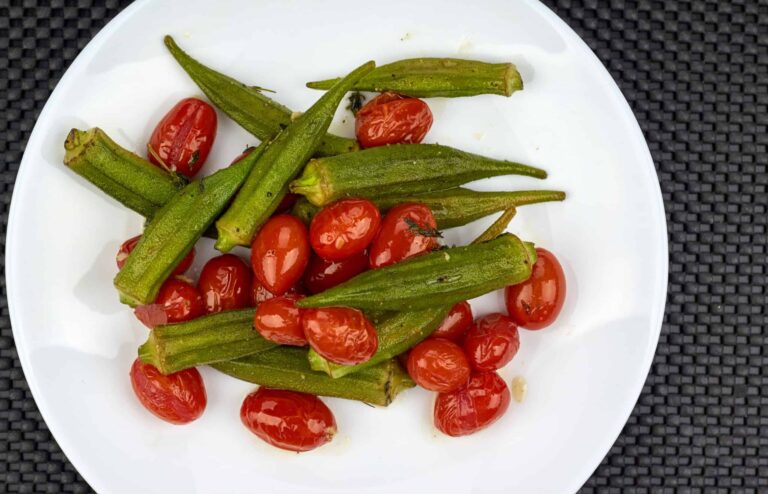Best Sweet Pepper Varieties to Grow
Over the years, I’ve grown dozens of sweet pepper varieties in my garden—some turned out to be reliable favorites, while others struggled with my climate and growing conditions. Through trial and error, I’ve learned which sweet peppers thrive, produce abundantly, and deliver the best flavor. Whether you want a classic bell pepper, an elongated Italian frying pepper, or a unique heirloom variety, choosing the right type makes all the difference. In this guide, I’ll share my top sweet pepper picks based on taste, productivity, and overall performance in the garden.
1. California Wonder
If you’re looking for a classic bell pepper, California Wonder is a time-tested favorite. I’ve grown this variety for years, and it never disappoints. It produces thick-walled, blocky peppers that turn from green to bright red when fully ripe. These plants are compact, making them perfect for small gardens or container growing. They also have strong disease resistance, which helps ensure a reliable harvest.
Why Grow It?
- Excellent flavor and crisp texture
- High yields and dependable growth
- Resistant to common pepper diseases like bacterial spot
2. King of the North
In cooler climates, some bell peppers struggle to reach full maturity before the growing season ends. That’s why I recommend King of the North for gardeners in short-season areas. This variety ripens quickly and produces large, blocky peppers with a sweet, mild taste. Even in unpredictable weather, it performs well and provides a steady harvest.
Why Grow It?
- Early maturing—great for northern gardeners
- Large, sweet fruits perfect for fresh eating or stuffing
- Reliable yields even in cooler temperatures
3. Jimmy Nardello
For an outstanding frying pepper, Jimmy Nardello is my go-to. This Italian heirloom produces long, slender red peppers with an incredibly sweet, rich flavor. I love using them in stir-fries, roasting them, or simply eating them fresh. They have thinner walls than bell peppers, making them ideal for sautéing. Plus, they’re highly productive, with plants loaded with peppers all season long.
Why Grow It?
- Super sweet, versatile flavor
- Excellent for frying, roasting, and fresh eating
- Prolific producer with minimal care requirements
4. Carmen
Another fantastic Italian-style pepper, Carmen is a hybrid variety that delivers reliable, high yields of long, tapered red peppers. One thing I love about Carmen is that it ripens earlier than many sweet peppers, making it a great option for gardeners in cooler regions. It’s exceptionally sweet, especially when fully red, and it’s perfect for roasting or eating raw in salads.
Why Grow It?
- Early ripening with high productivity
- Sweet, rich flavor with a hint of complexity
- Disease-resistant and easy to grow
5. Sweet Banana
If you want a mild, easy-to-grow sweet pepper, Sweet Banana is an excellent choice. This variety produces elongated, pale yellow peppers that eventually turn orange-red when fully ripe. I’ve found them to be extremely productive, even in less-than-ideal conditions. They’re great for pickling, slicing into salads, or sautéing.
Why Grow It?
- Very productive and adaptable to various climates
- Sweet, mild flavor perfect for fresh eating or pickling
- Grows well in containers or garden beds
6. Gypsy
Gypsy is another hybrid variety that has impressed me with its adaptability and high yields. It matures early and produces tapered, three-lobed peppers that transition from pale yellow to orange and then deep red. The flavor is incredibly sweet, and the plants are resistant to multiple diseases, making them a great choice for beginner gardeners.
Why Grow It?
- Early maturing and highly productive
- Sweet, crisp texture
- Resistant to common pepper diseases
7. Bull’s Horn (Corno di Toro)
For those who love Italian-style roasting peppers, Bull’s Horn (also known as Corno di Toro) is a must-grow. These long, curved peppers develop a deep red or golden-yellow color when ripe, and they have a deliciously sweet flavor. They’re fantastic for grilling, roasting, or stuffing. I’ve always been impressed by their size and the number of peppers each plant produces.
Why Grow It?
- Large, flavorful peppers perfect for roasting
- Prolific producer with sturdy plants
- Unique shape and color add visual interest to the garden
8. Chocolate Beauty
For something a little different, Chocolate Beauty is a stunning and delicious variety that produces deep brown peppers with a rich, sweet flavor. When fully ripe, they have a smoky-sweet taste that’s different from typical red bell peppers. I’ve found that they grow just as easily as other bell peppers and make a great addition to salads and roasted dishes.
Why Grow It?
- Unique deep brown color and rich flavor
- Thick-walled, juicy texture
- Great for fresh eating and cooking
9. Mini Bell Peppers (Lunchbox Peppers)
If you love snacking on sweet peppers, growing mini bell peppers—sometimes called Lunchbox Peppers—is a great choice. These small, bite-sized peppers come in red, yellow, and orange and are perfect for snacking, stuffing, or adding to salads. They’re incredibly sweet and grow well in both gardens and containers.
Why Grow It?
- Compact plants that fit well in small spaces
- Super sweet and great for fresh eating
- High yields of colorful mini peppers
10. Giant Marconi
One of the largest and most flavorful sweet peppers I’ve grown, Giant Marconi produces long, tapered fruits that develop a rich red color when fully ripe. These peppers have a smoky sweetness and are fantastic for grilling and roasting. They also have excellent disease resistance and grow well in a variety of conditions.
Why Grow It?
- Large, flavorful peppers with smoky-sweet notes
- Excellent disease resistance
- Ideal for grilling, roasting, and fresh eating
More Sweet Bell Pepper Varieties to Grow
Sweet peppers vary in shape and color and include the slender banana pepper; the short, round cherry pepper; the small bright-red, heart-shaped pimiento; the multi-colored Italian frying pepper; and the blocky green to yellow to orange to red bell pepper. Sweet peppers can be eaten raw, cooked, or pickled. Not all sweet pepper varieties are mildly flavored; some can be spicy and hot.
- Blocky Sweet Peppers: ‘Ace’ (55 days); ‘Bell Boy’ (75 days); ‘Bell Captain’ (72 days); ‘Big Bertha’ (72 days); ‘Bull Nose’ (55-70 days); ‘California Wonder’ (73 days); ‘Camelot’ (74 days); ‘Elisa’ (72 days); ‘Emerald Giant’ (74 days); ‘Jupiter Elite’ (66 days); ‘King Arthur’ (72 days);’ Little Dipper’ (66 days); ‘Midway’ (70 days); ‘North Star’ (66 days); ‘Secret’ (60 days); ‘Yankee Bell’ (60 days); ‘Yolo Wonder’ (73 days).
- Red Sweet Bells: ‘Cardinal’ (70 days); ‘Rampage’ (66 days); ‘Redwing’ (72 days); ‘Summer Sweet’ (76 days).
- Long Sweet Peppers: ‘Banana Supreme’ (65 days); ‘Hungarian Yellow Wax’ (65 days).
- Space Savers: ‘Baby Bell’ (55 days); ‘Jingle Bells’ (55 days); ‘Park’s Pot’ (45 days).
- Yellow-Orange Sweet Bells: ‘Canary’ (72 days); ‘Gold Finch’ (72 days); ‘Klondike Bell’ (72 days); Orobelle (70 days); ‘Peppourri Orange’ (75 days); ‘Summer Sweet’ (86 days).
- Heart-Shaped Sweet Peppers: ‘Pimento’ (65-80 days).
- Other Sweet Peppers: ‘Blue Jay’ (73 days); ‘Chocolate Beauty’ (58-86 days); ‘Cubanelle’ (62 days); ‘Purple Beauty’ (70 days).
Final Thoughts
Choosing the right sweet pepper varieties for your garden can make a big difference in your overall harvest. I’ve grown all of these varieties over the years, and each one has earned a spot on this list because of its reliability, productivity, and outstanding flavor. Whether you’re looking for a classic bell pepper, a flavorful Italian roasting pepper, or a unique heirloom variety, there’s a perfect sweet pepper for your garden.
What are your favorite sweet peppers to grow?
🌶 Peppers Growing Hub
Start here:
- How to Plant and Grow Hot Peppers: A Gardener’s Guide to Spicy Success
- How to Grow Sweet Peppers: A Gardener’s Guide to a Bountiful Harvest
Getting Peppers Started (general prep)
- Seed Starting Peppers: Proven Method for Strong, Healthy Plants
- Soil Preparation for Peppers: The Secret to Strong Roots and Big Harvests
- Best Hot Pepper Varieties to Grow for Salsas, Sauces, and Drying
- Best Sweet Pepper Varieties to Grow
- World’s Hottest Peppers You Can Grow in Your Garden
- The Science of Pepper Heat: Understanding Scoville Units
- Growing Peppers Indoors Under Lights
- Companion Planting with Peppers: Best and Worst Neighbors in the Garden
Planting & Growing Peppers
- When and How to Transplant Pepper Seedlings Outdoors
- 10 Steps to Grow a Bumper Pepper Crops
- How to Grow Hot Peppers in Containers: Tips for Small Spaces
- 7 Tips for Growing Peppers in Pots
- How to Grow Colored Bell Peppers: How to Get Reds, Yellows, and Oranges
- Cross-Breeding Hot Peppers at Home: A Beginner’s Guide
- How to Water & Fertilize Sweet Bell Peppers for Maximum Yield
- Pruning Pepper Plants for Healthier Growth and Bigger Harvests
- Six Tips to Grow Peppers for Flavor
- Pepper Season Extension & Overwintering: How to Keep Plants Producing Longer
Pepper Care & Troubleshooting
- Pepper Pests, Diseases, and Problems—How to Fix Them Naturally
- Caring for Peppers: Mid-Season Problem Cures
- How to Increase the Heat of Hot Peppers Naturally
- Overwintering Pepper Plants Indoors
- How to Overwinter Pepper Plants in Any USDA Zone
Harvesting & Preserving Peppers
- When to Harvest Hot Peppers for Maximum Heat
- How to Harvest Sweet Peppers for the Best Flavor
- How to Preserve Hot Peppers: Drying, Fermenting & Pickling
- How to Ripen Green Peppers Indoors
- Saving Pepper Seeds for Next Year’s Crop
Cooking & Using Peppers
- Preparing and Serving Sweet Peppers – Harvest to Table
- Five Ways to Cook and Serve Chili Peppers
- Stuffed Peppers: Best Varieties for Cooking
- Cooking with Hot Peppers: Flavor & Safety Tips
- How to Handle Hot Peppers Without Burning Your Skin
Books to help you grow:

